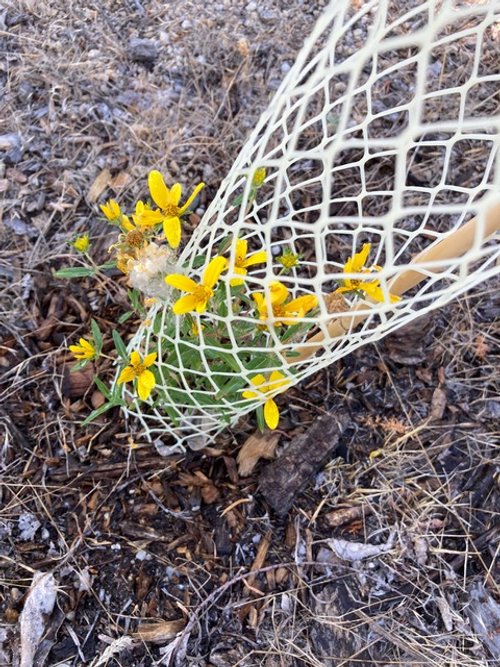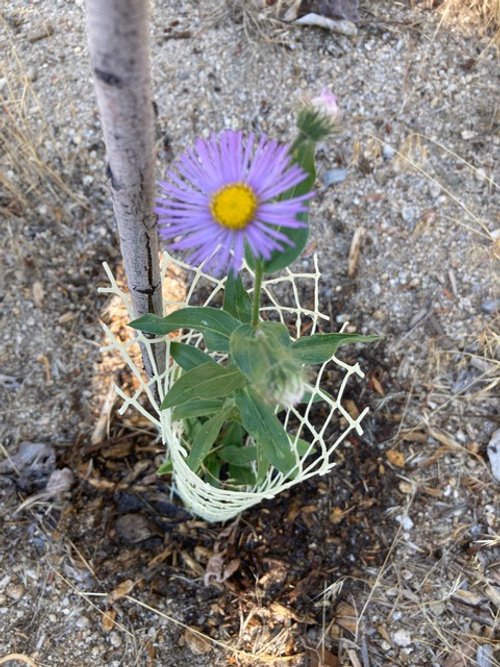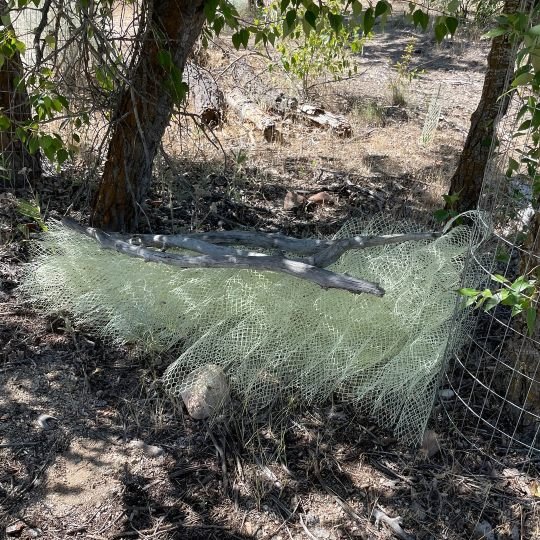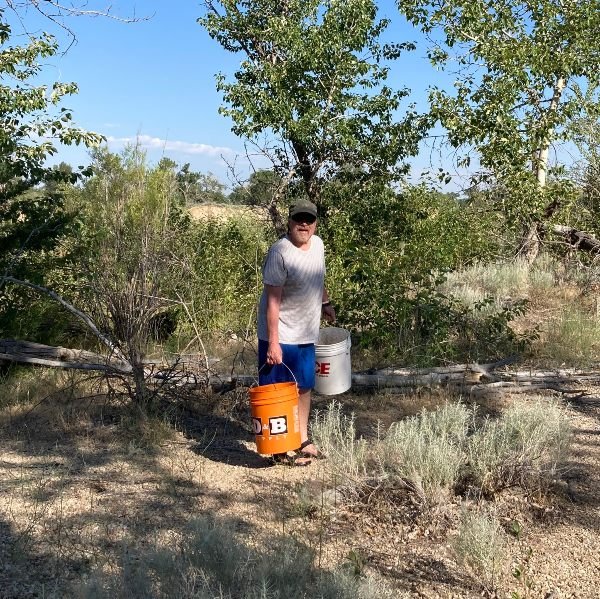Making Idaho Look Like Idaho
Text by Bhavana Padiyath, GEAS Guest Blogger
The Boise River ReWild Project is in full swing. A cornerstone of the cooperative 2-year project is re-establishment of native plants on public land near the Boise River. Golden Eagle Audubon Society manages the ReWild Project and has taken on responsibility for two half-acre lots in the Barber Pool Conservation Area. Jon Mathews is the Plot Lead for these two plots, and he oversaw the planting of more than 1,500 native seedlings and saplings in late 2022.
“Native plants give us a sense of where we are in this great land of ours. I want Texas to look like Texas and Vermont to look like Vermont.”
GEAS Plot Lead Jon Mathews
Repopulating the riparian habitat with native plants has a variety of benefits. Plants that are adapted to the local soil and weather conditions provide food and shelter to insects, birds, mammals, reptiles, and amphibians.
The native plants attract pollinators that play a vital role in plant reproduction throughout the ecosystem. Native plants have deep root systems that help to improve soil structure and drainage. This can help reduce erosion and flooding and improve the water quality in our streams and rivers. They filter pollutants from the air and water and absorb carbon dioxide. In short, native plants are essential for biodiversity.
Plant Species Selected Carefully
The native plants, big and small, used in the Boise River ReWild Project have been selected carefully keeping their specialized functions in the landscape in mind.
A giant Black Cottonwood along the Boise River
ReWild aims to increase the number of Black Cottonwoods, the tree species that once dominated the riparian corridor and are now in sharp decline. According to the Deschutes Land Trust, Black Cottonwoods are a “keystone species, one that has a disproportionately large impact on ecological systems relative to their abundance on the landscape. Roots help stabilize streambanks and floodplains. Wood that falls into the channel helps shape it, trap sediment, and provide cover for fish and other aquatic species. A cottonwood gallery provides shade and moderates stream temperatures. The branching structure and cavities that often result from heart rot in mature cottonwood stands provide nesting habitat for birds and cover for a variety of wildlife, including deer, elk, and beaver. Foliage also provides leaf litter to the stream that becomes food for aquatic invertebrates such as stoneflies, mayflies, and caddisflies.
Red Osier Dogwood provides shelter and food while stabilizing the soil. Downy Woodpeckers, American Robins, Cedar Waxwings and other birds depend on its fruit. Bees and other insects are attracted to the pollen and nectar of its flowers. The flowering plants like Showy Goldeneye and Aspen Fleabane (shown below), Yarrow, Globe Mallow, and Arrowleaf Balsamroot attract pollinators and are essential for the survival of various insect species. Common Milkweed with its tall pink or white flowers is a host plant for monarch butterflies.
Evergreen shrubs like the Basin Big Sagebrush, Silver Sagebrush and White Sagebrush being planted, provide benefits year-round. According to the Natural Resources Conservation Service, “nearly 100 bird species depend on sagebrush ecosystems for their habitat needs. Sagebrush also provide habitat and food for hosts of invertebrates which in turn support birds, reptiles and small mammals.”
Watering Is Critical To Plant Survival (and great exercise)
Jon and his team of volunteers are very busy now watering the small plants with short roots that haven’t reached the groundwater yet.
“As we move forward, we want to focus energy on those hardy plants that continue to grow, and even outgrow, some of our mesh cages!” said Mathews.
Every week volunteers fill buckets from the river and water the plants. They also ensure the protective netting is in place and look for problem areas. Recently Jon, Carlos Critchlow and four-legged volunteer Jill watered the entire acre in two hours. Carlos (below left) hauled batches of water from the river in buckets. Jon (below right) transferred them to watering cans and watered the seedlings one by one. Jill did the rounds making sure things were going as planned and on schedule. More recently, a team of five watered the GEAS plots and two neighboring plots in two hours. The extra people really helps.
“It is our plan to water these youthful plants through the rest of this summer. As plants near two years old, we anticipate that they will start to grow and reach water on their own,” Mathews said.
Native plants often have a slow growth rate, and it may not be easy to get them to establish under adverse conditions, especially in the searing summer heat. While some of the flowering varieties and sagebrush seem to be taking root, the grasses have had a much lower success rate. Mathews reported, “Sadly, I have removed some of the mesh protective tubes that shelter the babies. We knew there would be mortality, but we hope it never happens.” (see photo above)
“Anything that brings us back to the gentle rhythms of nature, anything that teaches us to be patient, is beneficial. Grace may be expressed via gardening. ”
Our volunteers continue to display an abundance of patience, grace and optimism.
Sign up today to be part of the ReWild Watering Brigade and give the plants the water they need.
Photo credit: Bhavana Padiyath, Jon Mathews and Liz Paul






